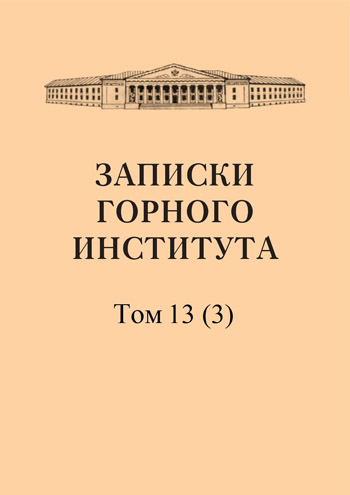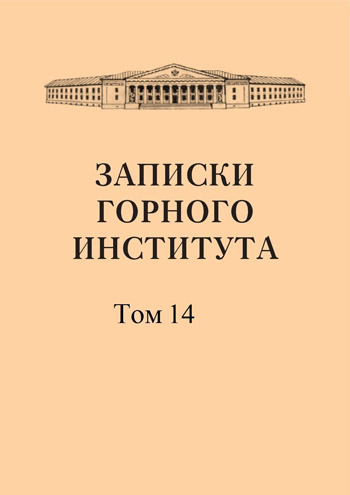-
Date submitted1940-09-12
-
Date accepted1940-11-21
-
Date published1941-03-01
In memory of Ivan Mikhailovich Bakhurin
- Authors:
- Department of Surveying at LGI
On October 2, 1940, after a long and serious illness, the head of the Department of Mine Surveying at the Leningrad Mining Institute, Doctor of Technical Sciences, Corresponding Member of the USSR Academy of Sciences, Ivan Mikhailovich Bakhurin, died. In 1909, after graduating from the St. Petersburg Mining Institute, I. M. Bakhurin became the first assistant of the first department of mine surveying art in Russia, which was created and headed by one of the most popular professors of the Mining Institute, V. I. Bauman. For a long time, I.M. Bakhurin was the dean of the Faculty of Surveying, and then the Mining Faculty of the Institute. In his scientific works, he elaborates on a number of important issues in surveying and magnetic prospecting. Ivan Mikhailovich was not only a great scientist, but also a talented teacher. All the main methodological documents on surveyor education in the USSR were created with his direct participation and leadership.
-
Date submitted1940-09-02
-
Date accepted1940-11-17
-
Date published1941-03-01
Stratification in fossil coals
- Authors:
- Yu. A. Zhemchuzhnikov
The study of stratification in a group of rocks of organic (more correctly, mixed) origin, such as solid caustobiolites, showed a certain similiarity of its origin with the stratification of plastic rocks. The stratification of coals has specific features that are characteristic only of fossil fuels. They are associated with a significant reduction in material and volume and compaction during humification and coalification from fresh peat to anthracite, which can be estimated at about 5-7 times. The horizontal orientation of plant remains is partly related to this very phenomenon. Stratification, its nature, origin and degree of identification are closely related to the conditions of origin of the coals themselves and can provide significant material for deciphering coals.
-
Date submitted1940-09-08
-
Date accepted1940-11-17
-
Date published1941-03-01
Technical and economic basis for determining the boundary of transition from open-pit to underground works
- Authors:
- P. I. Gorodetskii
The final decision regarding the boundary between open-pit and underground work, as well as determining their profitability, can only be obtained as a result of technical design, since only then is it possible to determine the impact of a number of organizational and technical factors affecting the volume of overburden and minerals, as well as by the value of cost indicators. From the point of view of the feasibility of capital investments, the use of two development methods for a field is justified in the following cases: when a sufficient lifetime for normal depreciation of fixed assets has been ensured for both open and underground work, when the use of open-pit work in combination with underground provides significant savings in production costs, justifying additional capital investment, when the use of one or another development method is caused by security requirements or technical necessity.
-
Date submitted1940-09-03
-
Date accepted1940-11-22
-
Date published1941-03-01
Potentiometric titration of sodium sulfide and xanthate in dilute solutions in their joint presence
- Authors:
- G. A. Osolodkov
The need for a method for determining Na₂S and xanthate in their joint presence arises mainly in connection with the enrichment of oxidized ores of copper, lead, and zinc. Ag₂S and a mercury electrode were tested as an indicator electrode for potential titration of a dilute Ag xanthate solution. The most convenient for analyzing xanthate solutions without sulfide sulfur is a mercury electrode. The presence of alkaline soluble carbonates, sulfates, sulfites and thiosulfates does not affect the titration result. A method has been developed for the potential metric titration of xanthates and soluble sulfides in dilute solutions in their compatible presence. The method consists of determining the sum of sulfide and xanthate using potential metric titration with a sublimate with a mercury electrode and determining sulfide using potential metric titration with double Ag cyanide on Ag - Ag₂S electrodes. Due to its simplicity and reliability, the recommended analysis method can be used not only in laboratory conditions, but also in factories to monitor the sulfidation process of oxidized ores.
-
Date submitted1940-09-20
-
Date accepted1940-11-29
-
Date published1941-03-01
Dependence of local resistance coefficients on the roughness of the walls of air ducts
- Authors:
- V. B. Komarov
- A. I. Kolbin
The question of the dependence of local resistance coefficients k on the roughness of the walls of air ducts is one of the little studied issues of practical aerodynamics. Most aerodynamics courses provide values, sometimes very detailed, of coefficients k for a number of local resistances - turns, sudden contractions and expansions, but are not indicated Usually, how to use these coefficients: should they be taken as constant, independent of the roughness of the walls of the air duct, or, conversely, should they be considered variable values, related in some way to the coefficient of friction on the walls of the air duct. The work done by the authors made it possible to clarify the relationship between the coefficients of local resistance k and the coefficients of friction a of air on the walls of the air duct. The previously accepted dependence turned out to be incorrect and must be replaced by another (see article). The turning resistance coefficients given in various courses should be increased for rough concrete fastening by 8-10% and for workings secured with staggered door frames by 25-30%. The correctness of formulas (11) and (12) for other types of local resistance requires verification.
-
Date submitted1940-09-09
-
Date accepted1940-11-27
-
Date published1941-03-01
Magnetic orientation
- Authors:
- G. A. Krotov
Orientation of mines is one of the most labor-intensive and responsible tasks of the surveying service. The production of magnetic orientation does not require stopping the mine shaft either during the preparation period or at the time of production. Magnetic orientation has a number of important advantages (see article). The accuracy of magnetic orientation, as is known (at this stage of study of this issue), does not depend on the depth of the mine. In addition, all sources of errors (in determining azimuth) that accompany geometric orientation are eliminated. Practice in the production of magnetic orientation here and abroad shows that if the work is carried out thoroughly and all required conditions are met, magnetic orientation guarantees an accuracy of 1'-2' and even higher. This is also evidenced by the results of our work described below. In our work, we make an attempt to analyze some of the issues raised above, based on an analysis of field observations we made in 1937 at the Novaya Golubovka mine.
-
Date submitted1940-09-09
-
Date accepted1940-11-24
-
Date published1941-03-01
Determination of the magnitude of vertical rock pressure at the intersection of workings
- Authors:
- V. D. Slesarev
In places of crossed or conjugate workings, the magnitude of vertical rock pressure, as is known, increases significantly. In this case, it is not possible to use the usual method of replacing the intersection of workings with a working of an equivalent span. Shape change theory is used to determine the magnitude of this rock pressure. Equations (8) and (10) represent the equations for changing the shape of the column in the case of straight or inclined intersections of shaft structures. The maximum change in the shape of the support angle is expressed by formulas (4) and (5). The equivalent width of the intersection of shafts is determined by formulas (9) and (15).
-
Date submitted1940-09-15
-
Date accepted1940-11-09
-
Date published1941-03-01
Cassiterite crystals from the Atlyansky placers in the Urals
- Authors:
- V. I. Mikheev
Crystal identification tables showed that five crystals of the mining museum N 110/1-4 and 110/8, which were stored as rutile, do not differ from cassiterite crystals. It is also known that these cassiterite crystals were formed from the Atlyan placers of the Southern Urals. When examining the Eremeevskaya collection of the Mining Museum, cassiterite was also discovered in stealth from the Atlyansky placers. Since tin deposits in the central regions of the USSR have not yet been discovered, and geological equipment in the area of the Atlyan River is favorable for the formation of cassiterite deposits, it is necessary to deploy it.
-
Date submitted1940-09-20
-
Date accepted1940-11-03
-
Date published1941-03-01
On the issue of the origin of black clay from the Sadonsk lead-zinc deposit
- Authors:
- I. S. Rudnik
Post-ore faults in the Sadonskoye deposit are accompanied by white and black clays. In the specialized literature, a paste or vein clay (gounge) is a soft, clay-like material that occurs as a rim between the vein and side rocks. The paste is usually formed by crushing and abrasion of ore, or side rock, or both together. Previous researchers considered the black clay of the Sadonskoye deposit to be captured by faulting clay shales (Domarev, Skakovsky). As a result of geological, petrographic and mineralogical studies, black clay appears as ground rock, crushed by the western fault, the source material for which was the side rocks of the ore body and the ore body.


